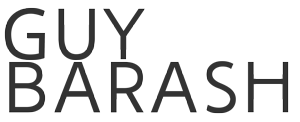As a composer of contemporary concert music, I seek to challenge listeners, to create a transformative experience for my audience. I want them to exit differently than the way they have entered. It is with explorative spirit and immense passion for invention that I lead the listener through new landscapes – unfamiliar, maybe uncomfortable at times – constructed of both “real” and imagined artifacts, sound objects. These artifacts are like memories: frequently altered and transformed in the narrative to expose underlying significance.
The perception of time and space interests me; specifically in music, the way we feel time passing, the sense of pulse, synchronicity, directionality, and how all of these relate to each other. I play on these things, the belief that we can measure time, or even feel when sequences or events are synchronized or not. In my music I generate a multi-metric environment where I explore concepts such as simultaneity, synchronicity, and geometricity. By using electronic processing I exploit latent characteristics of acoustic instruments and alter the relationship between foreground and background. The perception of time and space also relates to the subject of memory, which is something that I am now exploring further in my music.
I am also particularly interested in the juxtaposition of improvised materials with composed ones. This can be heard in some of my works where one instrument, or even a section, is improvising while another is playing composed materials. That provides the frame, or the limits for the improvised material. For instance, in my piece Talkback IV for piano and computer, you hear one hand playing composed music while the other is playing freer gestures. This is the source for some of my favorite textures. However, even my improvised sections have their rules and limitations within themselves. I am constantly looking for new ways to convey, and graphically represent improvised sections, and their limitations, in a way that will really encapsulate the type of improvisation and its characteristics. Basically, I wish to create a bank of improvised events. It helps me refine the process that I describe above, and to hear the improvised elements more clearly in order to anticipate what will work well with certain composed elements.
Another area which I have increasingly examined is the psychologically disorienting effect that microtonal composition has on both the listener and the performer. For example, in my first string quartet, Wrong Ocean, you can hear multiple layers or sequences of sonic events, that at times may sound conflicting, but constantly want to synchronize – all within a microtonal environment that can feel very disorienting to both the performer and the listener. Reflecting the state of mind that I was in while writing the piece, it was a personal process that was somewhat confusing and disorienting and redefined the way I see and perceive things. It transformed me in a way, and Wrong Ocean really captures the transformative quality of that moment in time.
The process of creating a shared social and cultural memory derives its validity from oral testimony, historical archives, academic studies, and physical spaces. Analogously in my music I invite audiences to explore their personal process, revisit their shared “historical” narrative in an attempt to fortify a collective experience, memory that is frequently altered and obscured. I think many people in our Western culture find it difficult to step out of their comfort zone, but in my work I strive to make this experience possible. For example, I often reference works of the canon and mutate them to a degree in which they become grotesque, yet still almost familiar. The idea is not necessarily to rebel, but to harness the association tied with these works. Like a Pavlovian conditioned response, the audience reacts to them: teleported to a safe place for a split second, but it is slightly distorted, and then suddenly they are confronted with the deepest fear of the unknown.
With an opus that includes orchestral, chamber, vocal, and electroacoustic compositions, as well as music for theater, I have produced an extensive body of work, which utilizes the previously mentioned compositional mechanisms and areas of concentration. I also enjoy incorporating a variety of unique texts in various settings and arrangements. My aesthetic often corresponds with extramusical sources and concepts, and my biggest influences are outside the field of music: film, poetry, and visual art have all played a significant role in defining my work. I believe that all artists are attempting to solve the same “problem” and I find it more interesting to see how creators from other disciplines approach it. I feel that I can learn a lot from them.
There are artists who exist to please, to entertain. I don’t. To describe me as an academic composer would also not be accurate. I don’t attempt to fit into existing templates. I am not trying to provide answers, but rather, to pose thought-provoking questions. I wish to help my audience discover great beauty in “mundane,” everyday life.

Leave a Reply